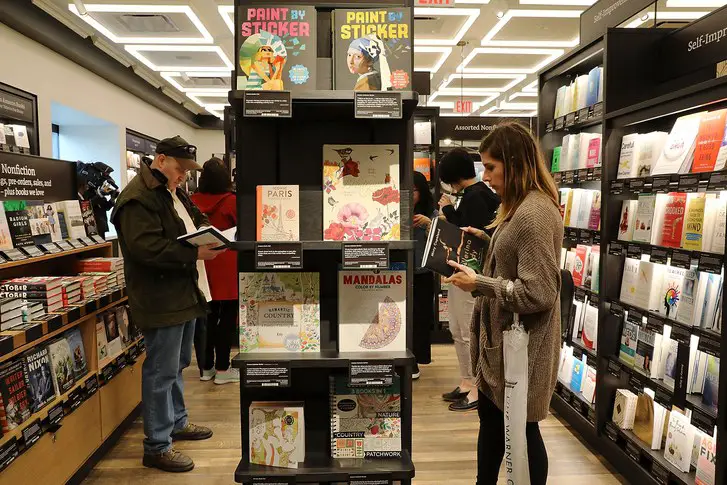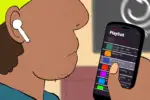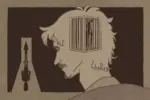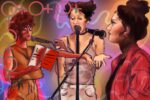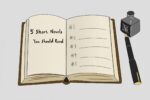Last week, British bookstore Waterstones got into trouble after tweeting that a lot of men don’t or won’t read novels by female authors. While the tweet may seem ridiculous, the post actually speaks to a wider societal problem: unfortunately, it does seem that male readers don’t give due attention to female-authored books. The phenomenon is reflected in the national top 10 best-sellers of 2017, which included only 3 female authors: RJ Palacio, Rupi Kaur and Margaret Atwood.
I've worked here for… well… a very long time.
In all that time, never has a woman said to me,
"I don't read books written by men."
However, at least once or twice a month, a man will say that he'll not read a book by a female author.
Men are ridiculous creatures.— Waterstones Uxbridge (@WaterstonesUxbr) May 24, 2018
In earlier centuries, female authors famously changed their names to be taken seriously in the male-dominated literary sphere; the Bronte sisters, for example, went by Currer, Ellis and Acton Bell. This trend is not consigned to the distant past, either: JK Rowling was advised to publish under “JK” rather than her real name, Joanne — she doesn’t have a middle name — because her publishers saw boys as the target audience for “Harry Potter.”
It is clear to me that males everywhere could benefit from reading novels penned by their female counterparts. So, here are seven things that need to be done in order to break the stigma and encourage men to appreciate female-authored books.
1. Retire the term “chick lit”
“Chick lit” is a term coined to refer to feel-good romance books aimed at women — maybe a mean term in itself, as there’s nothing wrong with enjoying those — but it seems to have grown to encompass any kind of books by and for women.
It’s insulting for female authors to have their work dismissed as chick lit when there’s no such term for men’s literature, even when it’s equally as low-brow as the term implies. Plus, the word “chick” explicitly suggests that these books are for women and men can’t read or enjoy them, which, of course, isn’t true.
2. Improve book cover design
Like the chick lit label, bad cover art has spread beyond romance stories to female-authored books of all genres, misrepresenting their content. Take the 2013 re-design for Sylvia Plath’s “The Bell Jar:” apparently, the appropriate cover for a dark novel about suffocating depression is a picture of a woman putting on makeup?
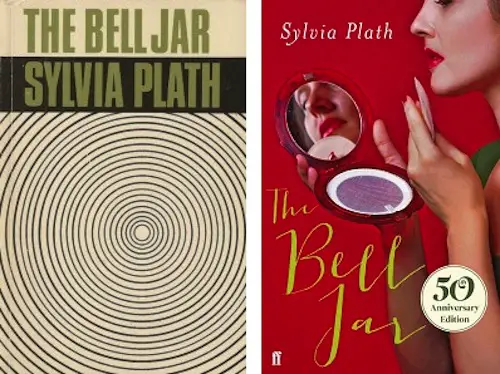
This wasn’t the last time Plath, in particular, was the victim of poorly matching cover art either as a 2017 publication of her letters featured a cover photo of her in a bikini. It’s just lazy to slap a bikini or lipstick on a book and be done with it just because it’s written by a woman. Cover art should reflect a book’s theme or content, not just the fact that there’s a girl involved in it.
3. Get rid of gendered sections in bookstores
There’s no need whatsoever to try and funnel women into one section, but some bookstores and libraries do. Not only do places often include a “women’s section” — which basically means romance, self-help and poolside reading — but there’s no male equivalent. Men aren’t boxed into a special interest category in the same way.
Given that women’s writing is generally more likely to be relegated to the women’s section, this aisle often contains female authors who actually write for genres with their own, separate sections in the store. So, for instance, if you go to the mystery section of the store without thinking to check the women’s section, there’s a chance you could miss out on some cool female mystery authors like Gillian Flynn or Åsa Larsson.
4. Address the gender imbalance of book characters
While men and women are actually pretty much represented equally as published authors, the self-fulfilling prophecy that men won’t read books by women is closely linked to the assumption that men won’t read books about women, as well. It’s a circular logic that’s particularly pronounced in children’s books, where, because of the assumption that boys won’t read about girls, characters tend to be male, even non-human characters like crayons.
Boys then grow up unexposed to women’s voices and perspectives. By not just challenging what books are for girls and for boys, but by putting female protagonists in books on both sides of this divide, female perspectives become normalized in literature and are easier to seek out.
5. Question how people look at classic literature
In 2014, a Goodreads study found that in the first year of publication, books written by women only have a 20 percent male audience, while books written by men have a 50/50 readership. Why is that? One explanation could be that books written by men are often framed as being about the human experience; books written by women are framed as being about the female experience.
Male literature is the default — and this mindset has a real effect. The Guardian’s list of the top 10 English language novels of all time includes just two female-authored books: “Frankenstein” by Mary Shelley and “Emma” by Jane Austen.
Even more notable, out of the eight Pulitzer prize winners for fiction since 2010, only two were women. It’s important, then, to change how people view the classics of literature; this will pave the way for new female authors to break out of the women’s section.
6. Listen to women’s voices
In their study on publication rates, the New York organization Vida suggested that most books reviewed professionally were by male authors, and most of the reviewers were men. If you’re both not hearing about female-authored books, and not hearing women talking about them, you might not even realize the narratives you’re missing out on.
In 2017, The Irish Times published a list of mostly female-authored books that “every man should read.” While that’s no doubt a very subjective claim, reading literature by women — and especially breaking out of the highly gendered realm of genre fiction into literary fiction — can be rewarding and refreshing in a world of fiction which tends to display a more homogenous male perspective.
7. Encourage exploring new books
With all these obstacles and the misleading ways that female-authored books are presented, it can be hard for individuals to venture into the world of women authors. An awesome way to begin would be to start a book club that reads books written by women, maybe at first in genres that you know you like.
If that’s not really your thing, Goodreads is a great way to discover new books, as you can see what your friends are reading and read user reviews of books, making it a rewardingly diverse and democratic space, perfect for seeking out new female literary voices.


